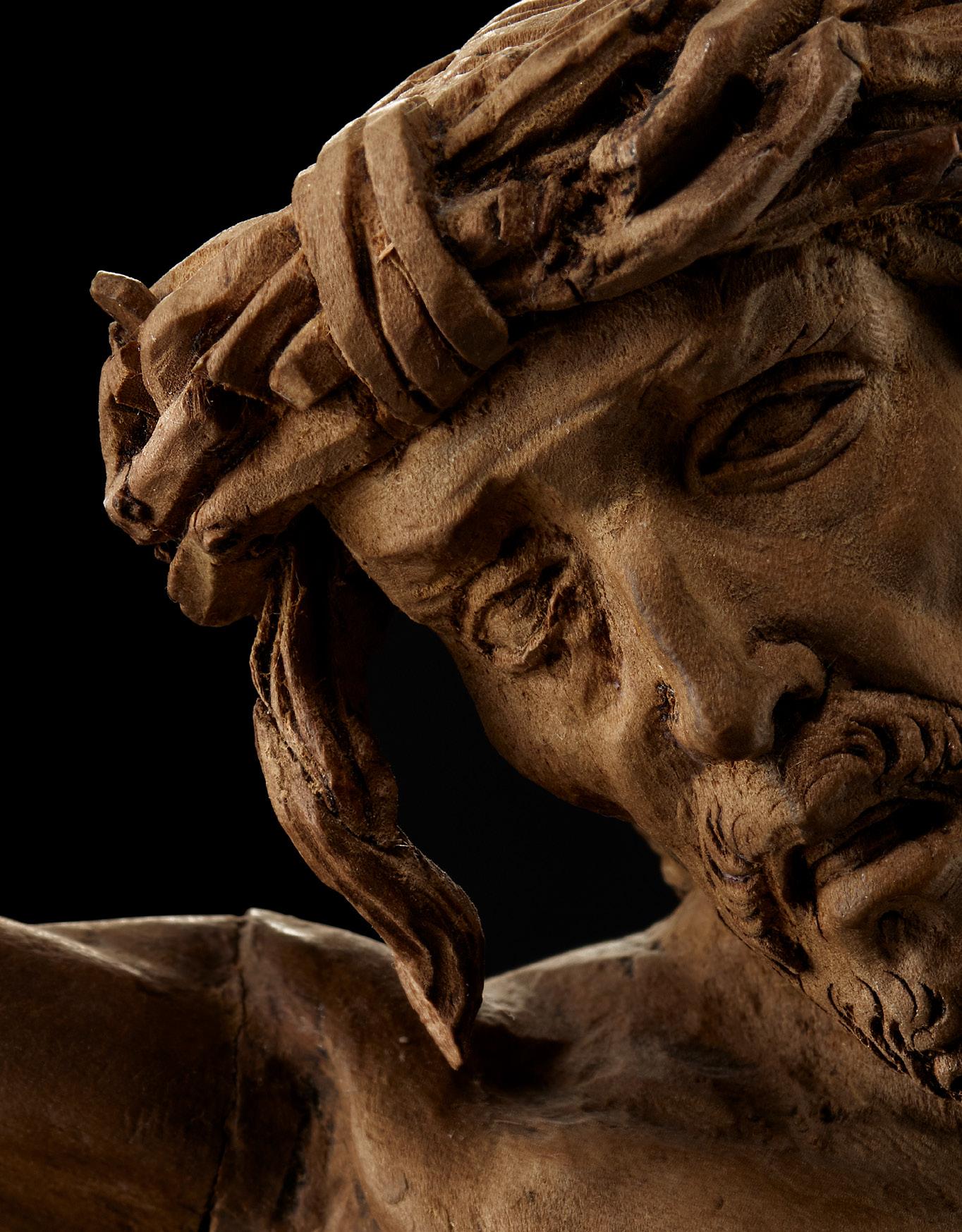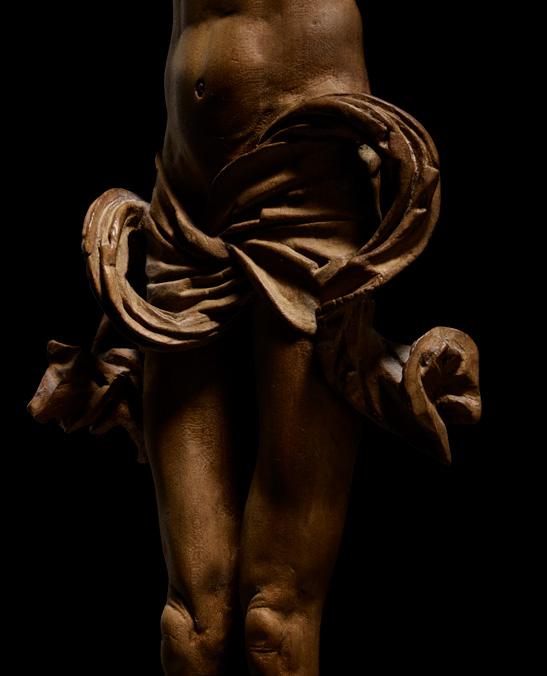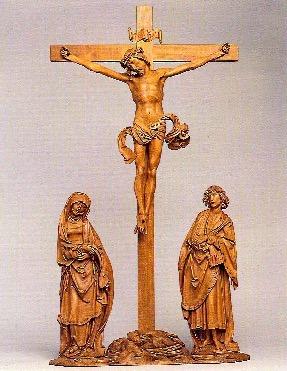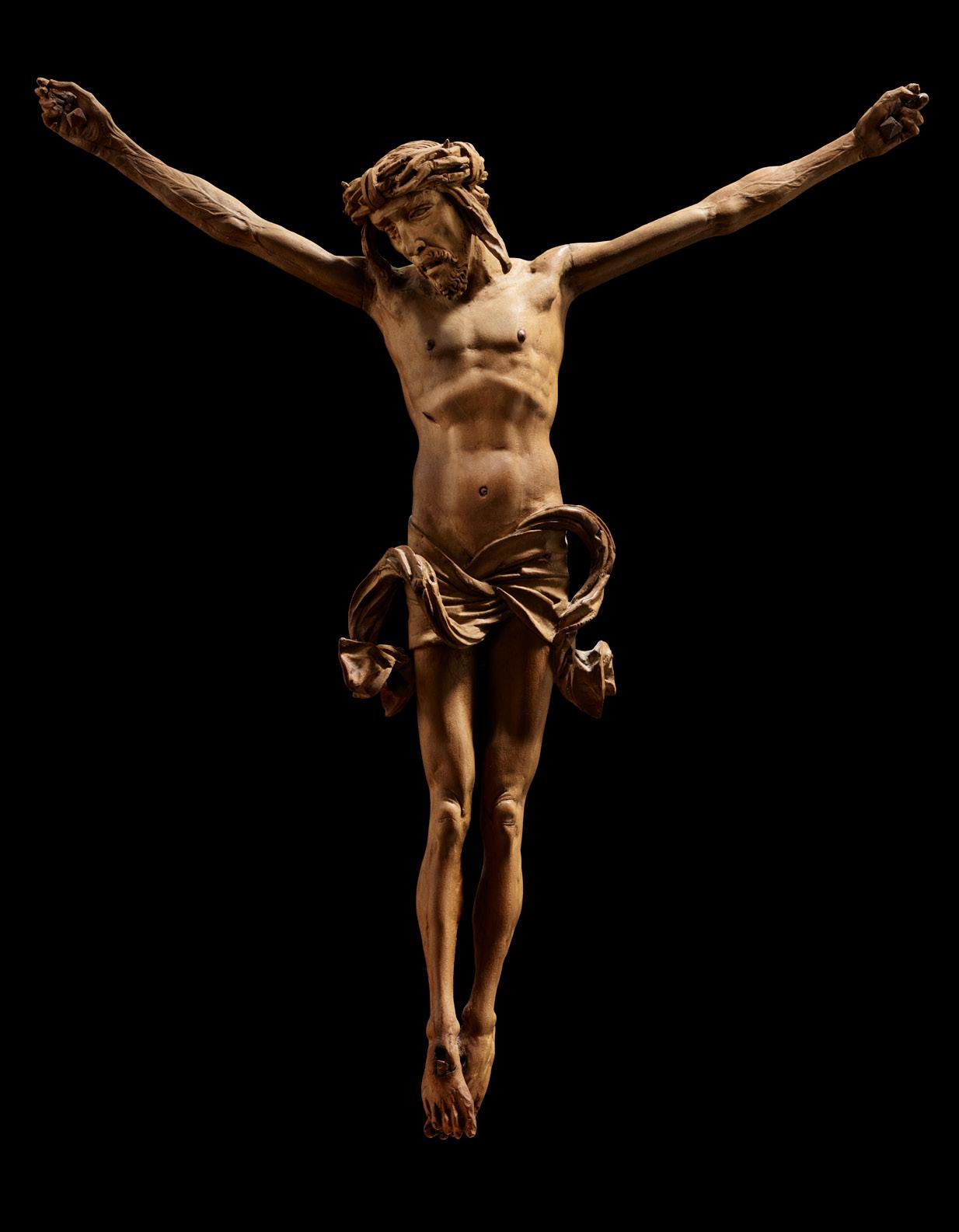
2 minute read
11 Christ Crucified, attributed to Tilman Riemenschneider
11

Advertisement


TILMAN RIMENSCHNEIDER attributed to 1460 Heiligenstadt – 1531 Würzburg
Early 16th century Fruit wood, carved in the round 24 x 22 cm
Provenance Collection of Professor Wilhelm von Miller (1848 Munich – 1899 Munich) Acquired in 1907 by Julius Böhler from von Miller’s estate Since then in family ownership
Comparative literature: Erik Soder von GÜLDENSTUBBE and Ariane WIDLICH, Tilman Riemenschneider und sein Erbe im Taubertal, Gerchsheim 2004, p. 67 ff.
Julien CHAPUIS, Tilman Riemenschneider, Master Sculptor of the Late Middle Ages, exh. cat., Yale University Press, New Haven 1999, p. 290 ff. The artist depicts Christ Crucified as a young man immediately after the throes of death on the cross. His head with the Crown of Thorns hangs heavily on his right shoulder. Clotted strands of hair frame his bearded face. His mouth is slightly open; his tongue pressing outwards – an indication that he has just died. Christ is nailed to the cross in three places – through both of his hands and through his feet that are arranged one over the other. The muscular, slim and seemingly elegant body is captured with considerable anatomical accuracy. The loincloth, tied around Christ’s hips, winds around the sides in artistic, almost Mannerist-like loops.
As the figure is relatively small, it was made for private devotional use and would have been placed on a house altar.
The figure is attributed to Tilman Riemenschneider. Stylistically, it is similar to depictions of Christ in the crucifixion group in the Hessisches Landesmuseum Darmstadt (fig. 1) – both made in Riemenschneider’s own hand. Christ’s face, the Crown of Thorns, his body and the loincloth are modelled on these works, as are the lance wound and the inserted nipples. On comparison, the face and hair of our figure of Christ are arguably slightly less finely carved.
Riemenschneider, one of the most important artists during the transition period from late Gothic to the Renaissance, created works largely of religious subjects. His customers included the Church and wealthy citizens. His first, prominent commissions that could be seen by the general public, primarily altarpieces and crucifixion groups, founded his artistic reputation and helped him establish a flourishing workshop in Würzburg.
11


Bildunterschriften ?
Get Out
Florian Eitle-Böhler
11








